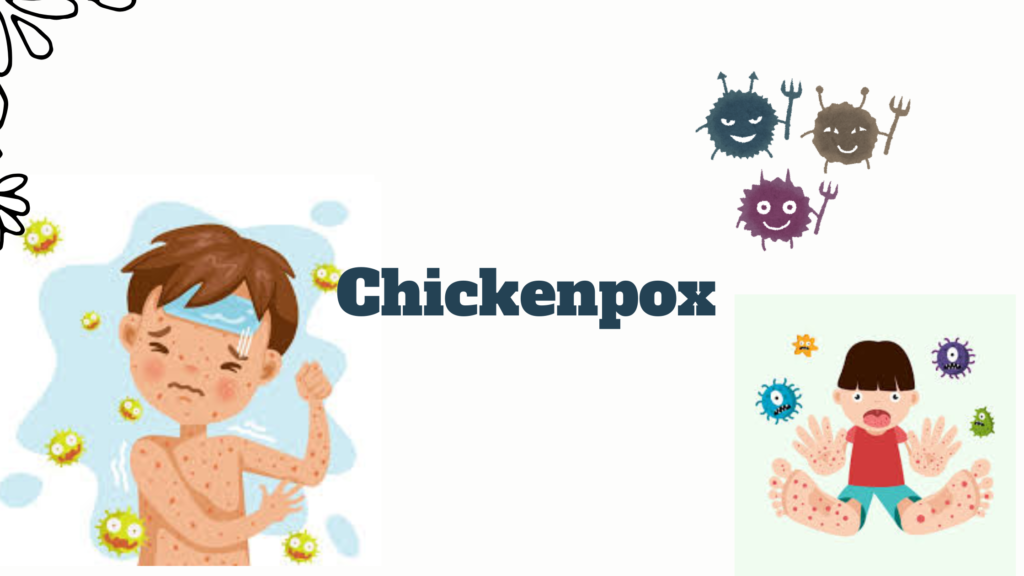🐔 Chickenpox (Varicella) – Overview
Chickenpox is a highly contagious viral infection caused by the varicella-zoster virus (VZV). It mostly affects children, but adults can also get it (and tend to experience more severe illness).
🧬 Cause
- Caused by varicella-zoster virus (VZV), part of the herpesvirus family.
- Spreads through:
- Direct contact with rash or blisters
- Respiratory droplets from coughing or sneezing
- Touching contaminated surfaces or objects
⚠️ Symptoms
Classic Signs:
- Fever (usually first sign)
- Itchy, blister-like rash that progresses through stages:
- Red spots → Fluid-filled blisters → Scabs
- Tiredness, headache, and loss of appetite
Rash pattern:
- Starts on chest, back, and face
- Spreads to the rest of the body (including mouth, eyelids, genitals)
- New spots can continue to appear for 3–5 days
⏱️ Incubation Period
- 10 to 21 days after exposure
- Infectious from 1–2 days before rash appears until all blisters have scabbed over
🧪 Diagnosis
- Usually based on symptoms and appearance
- Lab tests (PCR or serology) only needed in unusual or severe cases
💊 Treatment
- Supportive care for most healthy children:
- Calamine lotion or antihistamines for itching
- Acetaminophen (paracetamol) for fever (Avoid aspirin — risk of Reye’s syndrome)
- Antiviral drugs (e.g., acyclovir) may be used in:
- High-risk individuals (pregnant women, immunocompromised, adults)
- Severe cases
❗ Complications (More Common in Adults or High-Risk Individuals)
- Skin infections
- Pneumonia
- Encephalitis (brain inflammation)
- Dehydration
- Reactivation later in life as shingles (herpes zoster)
💉 Prevention
- Varicella vaccine (very effective)
- First dose: 12–15 months
- Second dose: 4–6 years
- Post-exposure vaccination within 3–5 days may prevent or lessen disease
- Avoid contact with infected individuals if not immune
✅ Key Points
- Chickenpox is usually mild in children but can be serious in adults or those with weak immune systems.
- Vaccination is safe and highly effective.
- Once you’ve had chickenpox, you’re usually immune for life, but the virus remains dormant and can cause shingles later.
